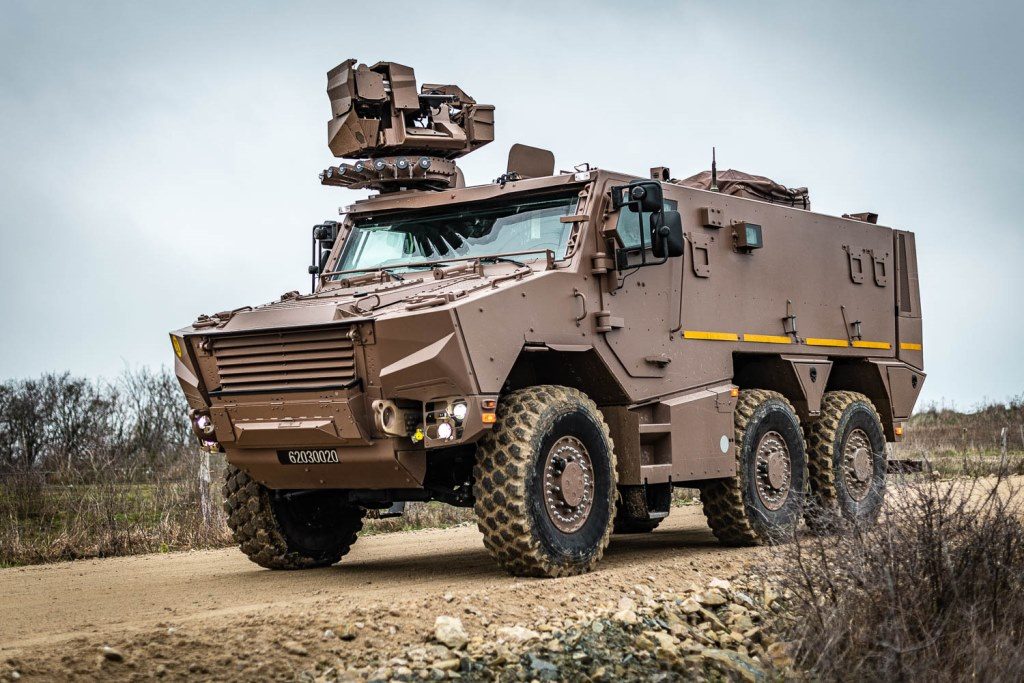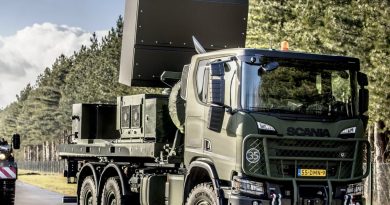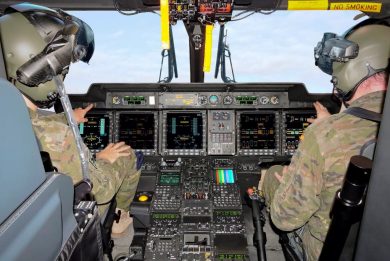
Scorpion programme: Nexter, Arquus, Thales and the DGA presented a GRIFFON integrating lithium-ion batteries to the Army
06/16/2022 – The GME EBMR (composed of Nexter, Arquus and Thales) and the DGA jointly presented the results of the risk-reduction study on the integration of lithium-ion batteries in military vehicles in presence of all project stakeholders and representatives of the Army Technical Section (STAT), the Operational Energy Service (SEO) and the Integrated Structure for Maintenance of Land Equipment in Operational Condition (SIMMT). This day, organized on the Nexter site in Satory, featured a Griffon EPC vehicle equipped with lithium-ion batteries.
The Griffon EPC was also equipped with a screen dedicated to the presentation, which displayed the remaining autonomy of the vehicle in standby with the combustion engine off, or the time remaining before full recharging when the combustion engine is started. This screen has made it possible to highlight the increase by 2 or even 3 times of the standby time allowed by lithium-ion technology compared to current acid/lead technology.
These new batteries will be able in the future to power more electrical equipment while maintaining the current standby time, and recharging twice as fast. The study began in early 2019 with the choice of two standard and mature models on the market: the 6 TE model from SAFT and the BT-0939 model from Brentronics. A theoretical analysis of the lithium-ion technology as well as an extensive test campaign was then carried out by Arquus with the Serma laboratory. This analysis enabled Nexter to identify the risks as well as the means to be implemented for safe integration into the vehicle.
Hutchinson presented its know-how on reducing the risk of lithium-ion battery fires spreading. Nexter then studied with Arquus and Thales an architecture for the Griffon vehicle. A model and a prototype on Griffon were used to test the complete system with the DGA Techniques Terrestres (DGA TT) and GME EBMR teams. The GME EBMR would like to salute the proactive spirit that prevailed during this risk-reduction study, making it possible to consider the use of these technologies on new vehicle fleets.


